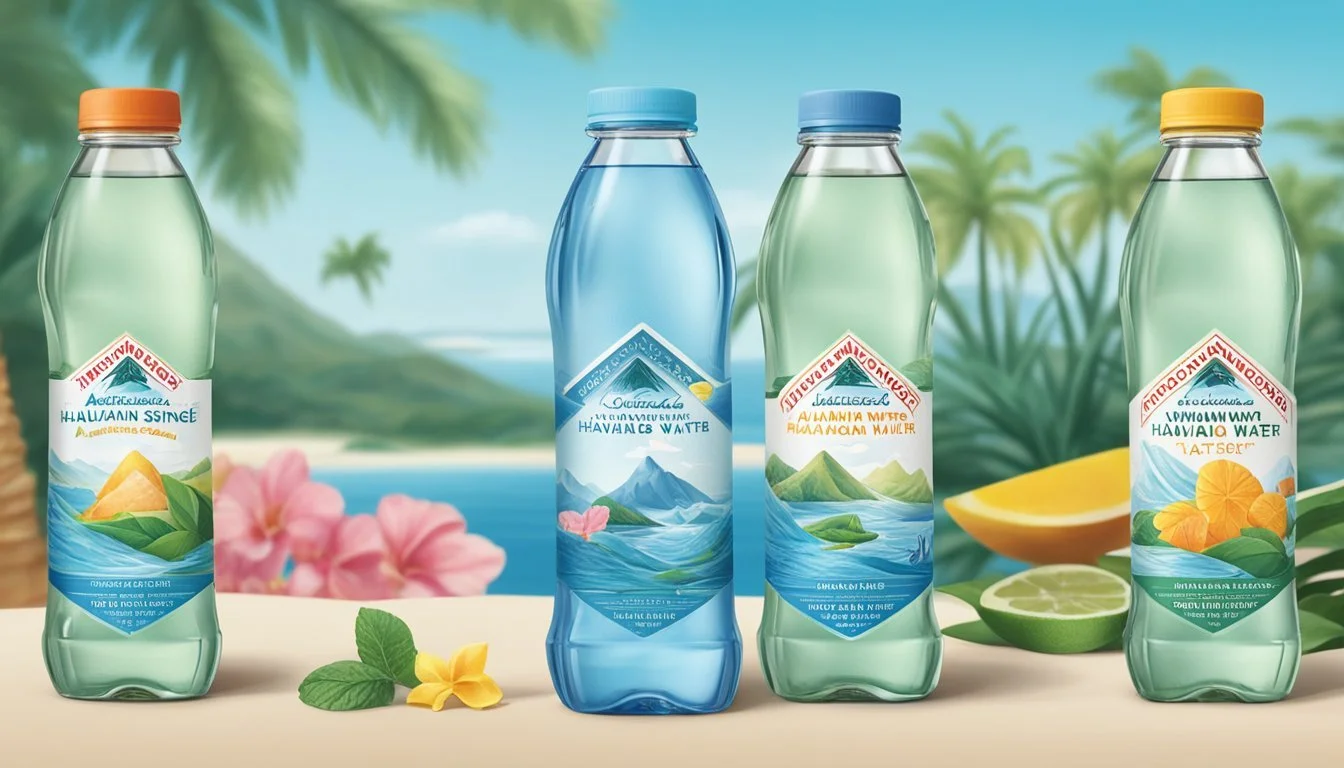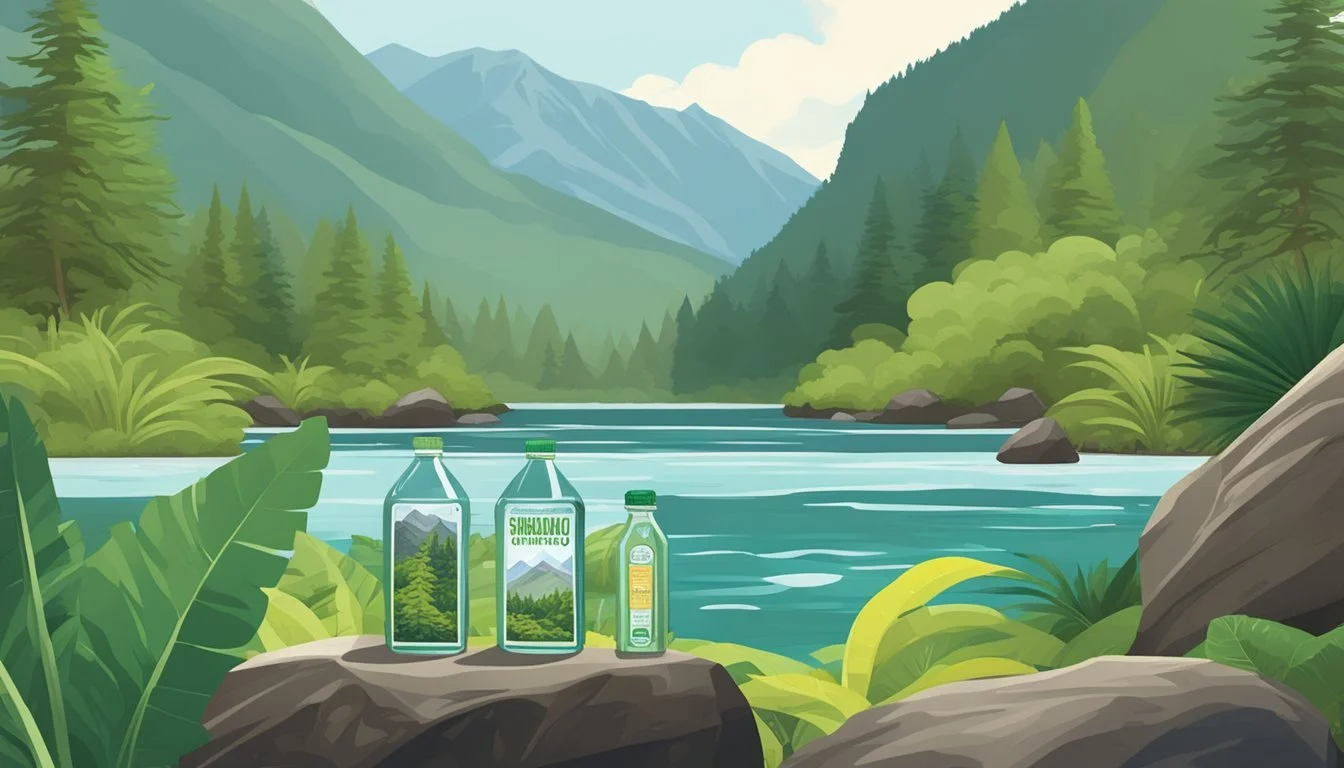Arrowhead vs. Hawaiian Springs
Evaluating Quality and Taste
Bottled water options abound, but among the most discussed are Arrowhead and Hawaiian Springs. Arrowhead, with its extensive distribution across the western U.S. and Canada, offers a widely accessible and affordable option. In contrast, Hawaiian Springs, sourced from the pristine ecosystems of Hawaii, presents itself as a premium choice with a distinct, fresh taste.
While Arrowhead sources its water from various mountain springs, ensuring a consistent yet somewhat unremarkable profile, Hawaiian Springs stands out with its unique volcanic filtration process, which many claim lends a smoother, more refreshing experience. For those seeking an everyday hydration solution, Arrowhead might suffice, but for a taste that evokes the purity of natural Hawaiian landscapes, Hawaiian Springs is a clear winner.
Choosing between these two brands ultimately hinges on what you value in bottled water. If cost and availability are top priorities, Arrowhead is the practical choice. However, if exceptional taste and a touch of luxury are what you seek, Hawaiian Springs undeniably excels. This comparison aims to guide consumers in making an informed decision that aligns with their preferences and lifestyle.
Understanding Bottled Water
Bottled water is often differentiated based on its source and treatment process. These distinctions impact taste, quality, and overall consumer preferences.
Origins and Source
Bottled water comes from various sources, each contributing to its unique characteristics. Natural spring water flows to the earth’s surface from an underground source, known for its purity and mineral content.
Mineral water also originates from protected underground sources and contains naturally occurring minerals. Purified water, on the other hand, is sourced from any water supply but undergoes processes like distillation or reverse osmosis to remove impurities.
The source influences taste, mineral content, and even pH levels, shaping the final product. For example, spring water often contains beneficial minerals, while purified water has a clean but potentially less distinct taste.
Types of Bottled Water
There are several types of bottled water available, each with distinct properties. Spring water is collected directly from a spring and is valued for its refreshing taste and natural minerals.
Mineral water contains at least 250 parts per million total dissolved solids, providing a unique taste due to its mineral content. Purified water has gone through processes like distillation, deionization, or reverse osmosis to ensure high purity.
Alkaline water has a higher pH level, often marketed for its health benefits. Sparkling water is infused with carbon dioxide for a fizzy texture, making it a popular alternative to sugary drinks. Each type caters to different consumer preferences and needs.
Health and Safety Standards
When considering the health and safety standards of Arrowhead and Hawaiian Springs bottled water, it's crucial to examine their mineral content, methods of filtration, and compliance with health regulations.
Mineral Content and pH
Mineral content and pH levels significantly affect the taste and health benefits of bottled water. Arrowhead boasts a diverse mix of minerals including calcium, magnesium, and sodium, which contribute to its neutral to slightly alkaline pH.
Hawaiian Springs, sourced from Hawaii's volcanic regions, also contains essential minerals. It typically features a pH level that leans towards the alkaline side, offering health benefits like better hydration and taste. Comparing these levels helps consumers choose water that suits their dietary or health needs.
Contaminants and Filtration
Filtration methods are vital for ensuring water safety. Arrowhead uses a comprehensive filtration process which includes carbon filtration and reverse osmosis, effectively reducing contaminants. This guarantees water free from heavy metals and harmful PFAS chemicals.
Hawaiian Springs similarly employs advanced filtration technologies to ensure purity. Their process often includes multi-stage filtration to maintain the water's natural mineral profile while eliminating impurities. The company's strict quality checks help ensure their water meets high safety standards.
Health Impact and Regulations
The health impacts of bottled water are guided by stringent EPA regulations, which both Arrowhead and Hawaiian Springs comply with. Arrowhead ensures their plastic bottles are BPA-free, reducing health risks associated with Bisphenol A.
Similarly, Hawaiian Springs adheres strictly to health regulations and uses high-quality, BPA-free bottles. Their adherence to these standards underscores their commitment to consumer health and safety. Regular testing for contaminants like heavy metals ensures that their bottled water is safe and healthy for consumption.
These brands’ commitment to health and safety is evident through their meticulous testing and compliance with regulatory standards. Readers looking for safe, high-quality bottled water can rely on the rigorously tested products offered by both Arrowhead and Hawaiian Springs.
Comparing Arrowhead and Hawaiian Springs
Arrowhead Mountain Spring Water and Hawaiian Springs Natural Alkaline Water offer distinct experiences shaped by their sources, mineral content, and pH levels. This section breaks down each brand to help consumers make an informed decision.
Arrowhead Mountain Spring Water
Arrowhead sources its water from springs in the United States, particularly in the mountainous regions. It is known for its natural mineral content which contributes to its crisp taste. Arrowhead typically maintains a neutral pH level around 7, making it a balanced option for everyday hydration.
The brand emphasizes its commitment to sustainability, often using eco-friendly packaging and supporting local conservation efforts. Consumers often choose Arrowhead for its reliable quality and availability. In terms of electrolytes, it naturally contains magnesium, calcium, and sodium, which are essential for maintaining hydration and balance in the body.
Hawaiian Springs Natural Alkaline Water
Hawaiian Springs offers water sourced from the Big Island of Hawaii, known for its naturally alkaline properties. It stands out with a pH level of approximately 7.7 to 8.0, making it ideal for those seeking the benefits of alkaline water, such as potential anti-acidic effects.
The water is filtered through volcanic rock, which enriches it with natural electrolytes and minerals. Hawaiian Springs highlights its pure, clean taste and commitment to environmental responsibility, using recyclable packaging materials. This brand is particularly favored by those who prioritize sourcing and mineral balance in their bottled water. The high alkalinity and unique source contribute to its premium positioning in the bottled water market.
Flavor Profile and Aftertaste Analysis
The flavor profile of Arrowhead bottled water is often described as having a slightly mineral-rich taste. This is due to its origin as spring water, which typically contains various naturally occurring minerals. Some individuals find this gives Arrowhead water a more complex taste compared to other brands.
On the other hand, Hawaiian Springs bottled water boasts a clean and smooth taste. This can be attributed to its source from volcanic aquifers, which filter the water through layers of porous lava rock, resulting in minimal mineral content and a soft, refreshing taste.
In terms of aftertaste, Arrowhead water leaves a somewhat noticeable mineral note. This can be off-putting for those who prefer a completely neutral finish. The mineral aftertaste, while mild, can linger slightly longer than other waters.
Hawaiian Springs bottled water offers a nearly imperceptible aftertaste. This makes it a favorite for those who seek a water with a clean finish. The aftertaste, being very subtle, enhances its appeal for individuals who prefer water without any lingering flavors.
When comparing the two, Arrowhead's more pronounced mineral presence can be appreciated by those who enjoy a fuller taste in their water. Conversely, Hawaiian Springs' mineral-light profile caters to those who prefer a pure and neutral water experience.
Both waters exhibit distinctive qualities in flavor and aftertaste, catering to different preferences. Individuals may choose Arrowhead for its complex mineral taste or Hawaiian Springs for its smooth and clean profile.
Environmental Concerns and Sustainability
Examining the environmental impact of Arrowhead and Hawaiian Springs highlights the essential considerations regarding packaging recyclability and overall ecological footprint. Each brand adopts different approaches to sustainability and eco-friendly practices.
Packaging and Recyclability
Arrowhead primarily uses plastic bottles, with a significant percentage made from 100% recyclable materials. However, the prevalence of single-use plastics remains a major concern. In contrast, Hawaiian Springs also uses plastic bottles but is actively exploring alternative packaging solutions such as cartons to reduce environmental impact.
While both brands promote recycling efforts, the effectiveness varies based on consumer habits and regional recycling facilities. The shift towards more sustainable packaging options is crucial, as it significantly influences the overall environmental footprint of the bottled water industry.
Environmental Impact
Arrowhead's water sourcing practices have faced scrutiny, particularly the siphoning of water from the San Bernardino Mountains, which has led to legal challenges and environmental activist opposition. These actions raise questions about the sustainability of their water extraction methods and long-term environmental damage.
On the other hand, Hawaiian Springs sources its water from a rainforest aquifer, avoiding some of the more contentious methods faced by Arrowhead. Nevertheless, concerns about transportation emissions, given Hawaii's remote location, add complexity to their sustainability practices. Reducing carbon footprints and ensuring sustainable water extraction remain pivotal in addressing these environmental concerns.
Practical Considerations
When comparing Arrowhead and Hawaiian Springs bottled water, it's essential to evaluate their convenience, accessibility, price, and value. These factors heavily influence consumer choice and satisfaction.
Convenience and Accessibility
Arrowhead Mountain Spring Water, established in 1905, has a broad presence across the United States, especially prominent in states like California. Its distribution network ensures that Arrowhead can be found in most grocery stores, convenience stores, and online retailers, making it readily accessible for consumers.
Hawaiian Springs, sourced from Hawaii, is less ubiquitous. It’s more challenging to find outside specialty stores or certain regions. This limited distribution means consumers may need to go out of their way or order online to access it, possibly incurring additional shipping costs.
Price and Value
Arrowhead typically offers competitive pricing. Due to its larger scale of operation and widespread availability, it can afford to keep costs relatively low, making it an economical choice for many consumers who are budget-conscious but still want quality spring water.
Hawaiian Springs, on the other hand, tends to be more expensive. The premium cost is partly due to its exclusivity and the perceived added value of being sourced from a Hawaiian aquifer. While some consumers are willing to pay more for the unique origin, others might find the higher prices less appealing when compared to the more affordable Arrowhead.
In summary, Arrowhead is often the more accessible and cost-effective option, while Hawaiian Springs may appeal to those seeking a premium, exotic water experience despite the added expense and limited availability.
Brand Evaluation and Reputation
Arrowhead Mountain Spring Water sources its water from mountain springs across the western U.S. and Canada. Despite its widespread availability and low cost, Arrowhead is often considered uninspiring by some due to its taste, which can be less appealing than premium brands like Fiji and Evian.
Hawaiian Springs, on the other hand, prides itself on sourcing water from deep within the Hawaiian Islands. This brand markets itself as a premium product, often highlighting the pristine and unique volcanic filtration of its water, which contributes to its distinct taste. It positions itself among high-end brands like Smartwater and Evian.
Nestlé Waters, the largest bottled water corporation, owns multiple brands, including Nestlé Pure Life and Deer Park. These brands are known for their extensive distribution. However, products like Nestlé Pure Life are sometimes criticized for being average compared to others.
Brands like Dasani and Aquafina, which are owned by major beverage companies Coca-Cola and PepsiCo respectively, also play significant roles in the market. Both brands are widely recognized, but they face criticism for the source and purity of their water.
When comparing Arrowhead and Hawaiian Springs, it's clear that Hawaiian Springs targets a more niche market with its emphasis on premium quality. In contrast, Arrowhead focuses on accessibility and affordability. In terms of taste and purity, many premium brands such as Fiji, Evian, and Smartwater lead the market, setting high standards that both Arrowhead and Hawaiian Springs must contend with.
In summary, while Arrowhead offers convenience and cost-effectiveness, Hawaiian Springs leans heavily on its unique source and premium branding to stand out in the crowded bottled water market.








